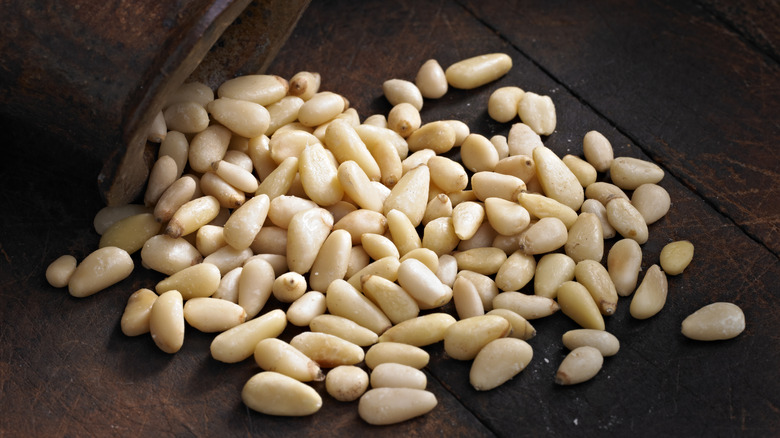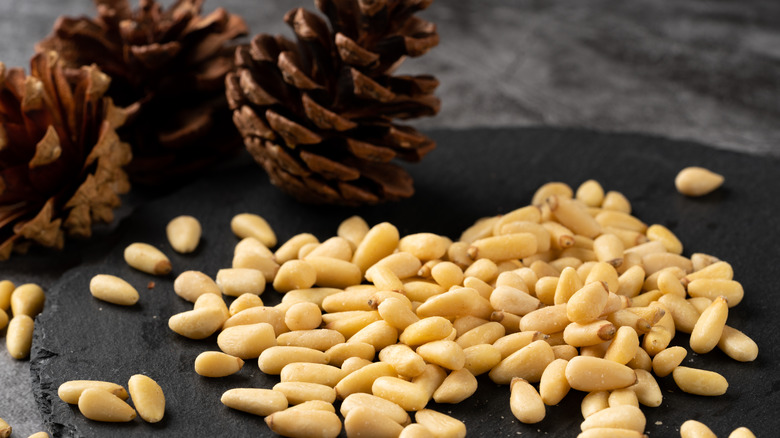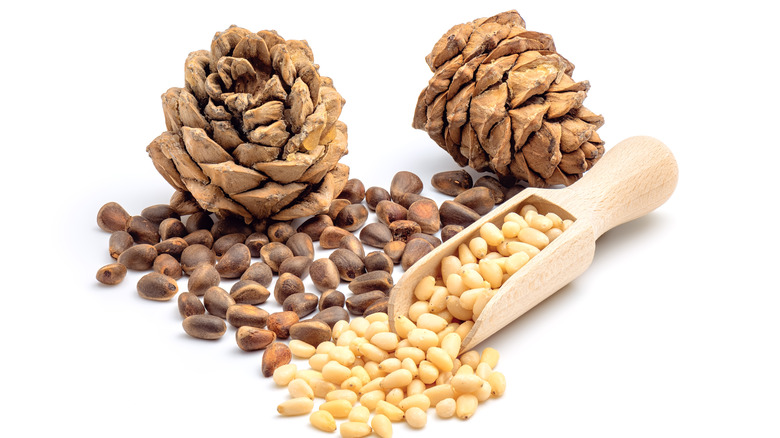Most People Don't Realize That Not All Pine Nuts Are The Same
Pine nuts are small, buttery seeds that come from different specifics of pine cone-producing trees. The seeds grow inside of pine cones and take several years to mature, which contributes to their typically high price point.
In addition to their steep price tag, pine nuts have a reputation for being high in calories (about 227 calories per ¼ cup) and rich in vitamins, minerals, and healthy fats. Many are familiar with pine nuts as one of the main ingredients in pesto or as a crunchy salad topping; however, they may not be familiar with the many different varieties of pine nuts.
Of the many species of pine trees that produce pine cones, about 20 produce pine nuts that can be harvested, though many are too small to be popular. The seeds from each different species vary in look and flavor, and processing may also impact flavor, since certain varieties are often processed to achieve a different flavor profile; for example, to be sweeter or saltier.
The different types of pine nuts
Of all the different pine nut varieties, many are sold in the regions where they grow, and a few have gained international popularity. Among the species of pine trees that produce the most exported pine nuts are pinus koraiensis from China, pinus pinea from southern Europe, pinus gerardiana from Pakistan and Afghanistan, and pinus sibirica from Russia. In North America, pinus edulis from the southwestern United States and pinus cembroides from Mexico are also popular varieties.
Each of these species of pine trees produces pine nuts that vary in appearance. For example, Chinese pine nuts are usually shaped like a corn kernel, while European and Middle Eastern pine nuts are more elongated. The pine nuts may also vary in flavor: For example, American pine nuts have a richer, more buttery taste than others, Chinese pine nuts are more bitter, European pine nuts have a strong smell, and Pakistani pine nuts are sweet and oily.
How are pine nuts harvested and processed
Pine nuts from different regions also differ in how they are processed before reaching the consumer. Production is a time-intensive process, since it usually takes pine trees about 25 years to begin producing edible seeds, and even longer to consistently produce seeds. In addition, seeds take at least three years to mature.
Once they are ready to harvest, pine cones are usually picked by hand, after which they need to be dried to release the seeds from the cones. Techniques for drying vary by region, and may involve lying the pine cones out in the sun or roasting them. From there, the seeds are either manually or mechanically extracted, and the hard outer shell — similar to a pistachio — is typically removed.
Depending on the region and natural taste of the pine nuts, some are processed to improve taste. For example, many pine nuts are roasted plain or with salt to bring out oils and give the pine nuts a richer taste. Pine nuts that are already very oily, however, such as Siberian pine nuts, are usually sold raw.


